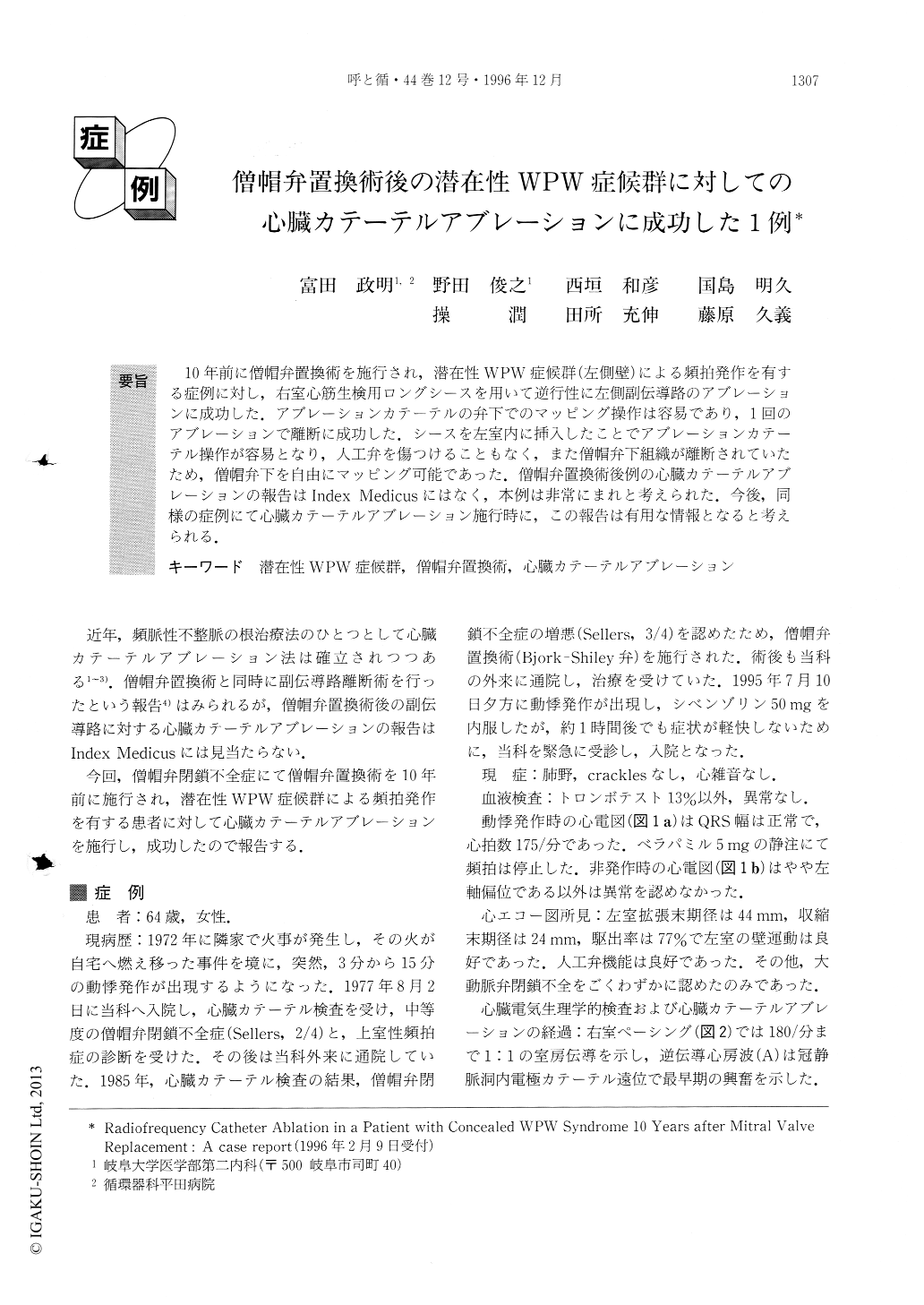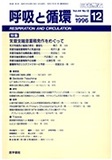Japanese
English
- 有料閲覧
- Abstract 文献概要
- 1ページ目 Look Inside
10年前に僧帽弁置換術を施行され,潜在性WPW症候群(左側壁)による頻拍発作を有する症例に対し,右室心筋生検用ロングシースを用いて逆行性に左側副伝導路のアブレーションに成功した.アブレーションカテーテルの弁下でのマッピング操作は容易であり,1回のアブレーションで離断に成功した.シースを左室内に挿入したことでアブレーションカテーテル操作が容易となり,人工弁を傷つけることもなく,また僧帽弁下組織が離断されていたため,僧帽弁下を自由にマッピング可能であった.僧帽弁置換術後例の心臓カテーテルアブレーションの報告はIndex Medicusにはなく,本例は非常にまれと考えられた.今後,同様の症例にて心臓カテーテルアブレーション施行時に,この報告は有用な情報となると考えられる。
In a patient with concealed WPW syndrome 10 years after mitral valve replacement, radiofrequency catheter ablation was performed. Using a long introducing sheath whose tip was inserted into the left ventricle, the 7F ablation catheter was able to be put into the left ventricle. By this method, manipulation of the ablation catheter became easier, and the absence of mitral appa-ratus after mitral valve replacement made the manipu-lation of the ablation catheter easier. In this way we were able to find the best point for catheter ablation easily, and successfully ablate the accessory pathway in a single attempt at radiofrequency catheter ablation. There has been no case report concerning radiofrequen-cy catheter ablation of WPW syndrome (left lateral) in a patient after mitral valve replacement. This case appeared to be a rare case.

Copyright © 1996, Igaku-Shoin Ltd. All rights reserved.


